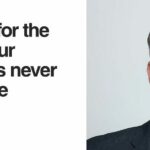[oldembed width="425" height="300" src="https://www.youtube.com/v/Zn8Ej_7TNr4?version=3&hl=en_US&rel=0" resize="1" fid="1"]
The video above shows the UC Berkeley protest on Nov.9, 2011 with campus police beating students back with batons.
The assistant police chief tasked with reviewing campus police actions during the November 9, 2011 protest at UC Berkeley wrote that "Some of these findings will be controversial," in his 50-page report to the UC Berkeley police chief. Critical of the administration, he found that the police should have been allowed to use pepper spray on the protesting students.
Outraged protesters are calling the report a "a tactical handbook for warfare against students."
Via:
Berkeley's Chancellor Robert Birgeneau, traveling in Asia that day, had prohibited the use of pepper spray. That ban proved prescient, as Birgeneau later noted, because UC Davis officers were captured on video weeks later using the chemical irritant to coat seated protesters, prompting outrage around the world. Reviews of UC Davis police actions are pending.
In the Berkeley report released Friday, Young said that police acted properly in every way: in removing the tents, in their preparedness, in their training. He had several recommendations, including that police prepare formations out of view of protesters, to better take them by surprise.
He lamented, however, that "force options" for police were limited on Nov. 9.
Referring to pepper spray, he wrote: "A few focused applications on the crowd that blocked the officers near the row of bushes would likely have cleared that area very quickly, with few additional baton strikes."
Perhaps because this is the campus police reviewing themselves explains the outrageous conclusion that during this absolutely peaceful protest police should have been allowed to use both pepper spray and the batons to beat students. If this is considered standard procedure on our nation's university campuses, it's a wonder that we haven't yet seen more Kent State-like situations. Is it only a matter of time?
To see the full review of UC Berkeley police actions, click here.
The following video shows the police response to the student protest at UC Davis on November 18, 2011 with pepper spray being used liberally on seated students.
[oldembed width="425" height="300" src="https://www.youtube.com/v/6AdDLhPwpp4?version=3&hl=en_US&rel=0" resize="1" fid="1"]















